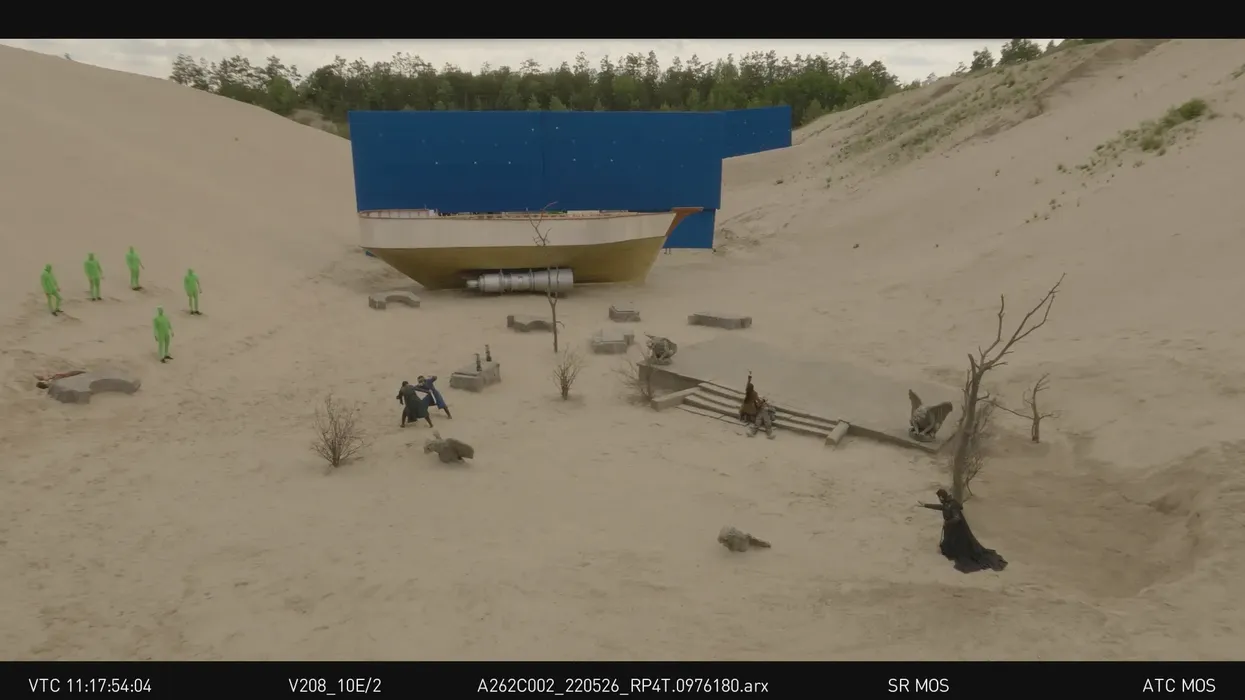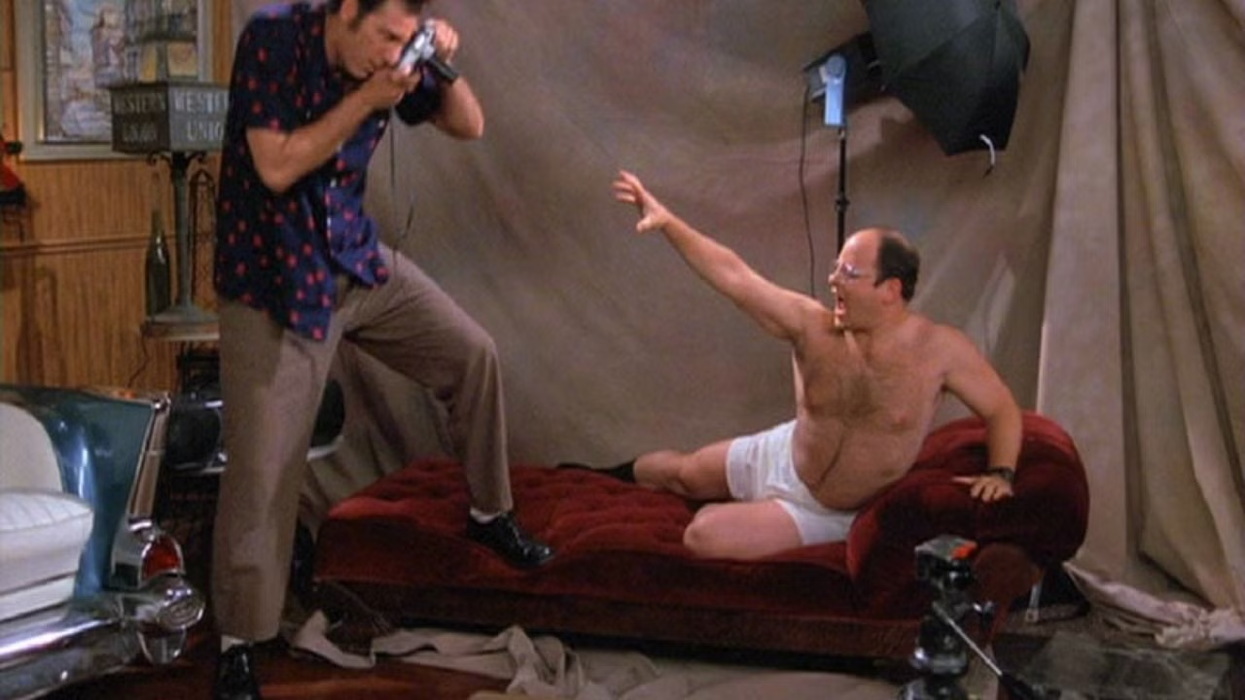Netflix’s "Shadow and Bone" Earns 2023 Emmy Nomination for VFX Using Adobe After Effects and Photoshop
Turning the showrunner’s dream into a believable on-screen world is one of the biggest challenges for VFX teams.

This post was written by Kylee Peñaand originally appeared on Adobe blog on Oct. 16, 2023.
Not only are they tasked with creating highly realistic, complex characters and environments, they are also working against tight deadlines and budgets—all while realizing the vision of the wider creative team. The Netflix series, Shadow and Bone, is an exceptional example. Its fantastic bestiary includes monsters made of writhing shadows, a magical stag, and the sea whip, a fearsome water dragon featured throughout the series.
Many of the VFX sequences required weeks and even months of preparation, from style frames to the final cut. To help keep the complicated production on track, VFX supervisor Ante Dekovic, used Adobe Creative Cloud apps Adobe After Effects and Adobe Photoshop to collaborate with Shadow and Bone artists and VFX teams and create stunningly realistic sequences.
The sea whip and other Shadow and Bone creatures have captivated millions of viewers and earned Dekovic and the VFX team an Emmy nomination for Outstanding Special Visual Effects in a Single Episode for the show’s “Rusalye” installment. Dekovic recently took the time to tell us about his work on Shadow and Bone, how Adobe Creative Cloud helped bring the team’s vision to the screen, and his experience moving from Europe to work in Hollywood.
How did you first get into VFX? What drew you to it?
In 2001, fresh out of school, I started working for a production company in Germany, where I grew up. They had some VFX software and the artists were using a Wacom tablet and I thought that was pretty cool. After trying it out I was pretty much hooked. Since their system wasn’t affordable at the time, I started learning After Effects and I’ve been using it ever since.
What was the inspiration behind your VFX work on the show? What were you trying to achieve?
Shadow and Bone is a fantasy show with mystical creatures, exotic places, and magic. Although we had a lot of effects as a reference from season one, we had to come up with new and exciting looks. The biggest challenge was to make something that does not exist in the real world look real and integrate all the VFX elements so that they don’t stick out. We wanted to keep the audience focused on the story rather than the VFX.
What Adobe tools did you use on this project and why did you originally choose them?
For the most part, I used Photoshop and After Effects. Since I was a compositor for almost 15 years before becoming studio side VFX Supervisor, I like to quickly create some mockups and looks. After Effects, unlike other compositing tools, is layer based which makes it easier to turn layers on and off, get a better overview, and make quick changes on the fly.
How did you begin this project? Can you talk about the collaborative process with the director and/or editor, and the process of creating your work from start to finish?
Once I read the script and even before the director started, I had a few meetings with the showrunners. We went through all the new aspects of the season and what they were looking for. Then I started talking to Crafty Apes, one of the vendors who would create style frames based on some of the ideas which we discussed. To avoid a lot of back and forth and to save time, I would take their concept work and make minor changes myself in Photoshop, which we would present to the showrunners and the studio.
Describe your favorite piece or component of the project. How did it come together and how did you achieve it?
I would say it’s definitively the sea whip, a dragon-like creature that climbs on walls and swims underwater. The moment I read the script, I realized that it would be extremely challenging but also knew that with the right vendor, we would be able to pull it off. Juri Stanossek, VFX supervisor at Accenture Song (formerly Mackevision) and I go way back to Game of Thrones, so I knew that his team was perfect for this sequence. After our kickoff meeting, their concept artist began working on the design, which we then ran by the showrunners and studio. Once we got their approval, we started sculpting it in 3D.
In the meantime, we discussed the sequence with the director, actors, stunt team, and the rest of the crew. We had to change the size of the set a bit so that the digitally created creature would believably fit in the space. The actors had a guy in a green suit for reference and Juri and I were on set to ensure that we got what we needed to add the creature later in post. We also provided Accenture Song with a 3D scan of the on-set cave, so they had the set digitally as well. The whole process from prep, to shoot, to delivering the finished sequence, took about eight months.

Source: Ante Dekovic, "Shadow and Bone" VFX Supervisor
What were some specific challenges you faced? How did you go about solving them?
I would say the biggest challenges on the show were Nichevoyas, ten-foot-tall creatures created entirely out of black smoke. We had our actors interact and fight them throughout the season. In the final episode of the show, two of our heroes fight four creatures at once, which from a shooting standpoint is very complex. Luckily, we had an amazing director as well as incredible stunt and previz teams. After weeks of prep, everybody including the actors knew how to shoot it and the editors had a guideline on how to cut the sequence. Accenture Song did the VFX here as well.
If you could share one tip about any or multiple Adobe tools you used, what would it be?
The biggest help Photoshop and After Effects provided was that I was able to share mockups and ideas that I created with the vendors and our in-house artists. We saved a lot of time and didn’t have to throw away work since we were able to exchange the project files and footage and relink them easily. Also being able to open Photoshop layers in After Effects helped when we needed to add any movement to sell the idea better on the timing.
Who is your creative inspiration and why?
My creative inspiration is all the people that make a project happen, from a set PA to a director, producer, concept artist, and production designer. There is nothing better than exchanging ideas with so many talented and creative people and sparking each other’s creativity by brainstorming ideas. Then, after months and months of hard work, seeing it all come together.
What’s the toughest thing you’ve had to face in your career and how did you overcome it? What advice do you have for people aspiring to get into the VFX space?
The hardest part when I started VFX was moving to Los Angeles from Europe to work on big Hollywood projects. Also, since social media was non-existent, it was hard to showcase your work and get a foothold in the industry. These days you can work on a large project from anywhere in the world and showcase your skills, since all you need is a high-speed internet connection. I have seen people working from their bedrooms in small towns on major Hollywood productions. My advice would be if you really love and believe in the art of VFX, go for it. Anything is possible these days.
Share a photo of where you work. What’s your favorite thing about your workspace and why?

Source: Ante Dekovic, "Shadow and Bone" VFX Supervisor.
This is my set "office." What I like about it is that I had a place to go and focus when I needed a break from running around and talking to directors, EPs, etc.

Source: Ante Dekovic, "Shadow and Bone" VFX Supervisor
This is my home office that I used during post production of Shadow and Bone. I like to keep it minimalistic and clean with just few decorative things that remind me of accomplishments and past/present projects. The Emmy, the Shadow and Bone skateboard that was gifted to me by Juri Stanossek and my Hungarian VFX team, and the Star Trek: Discovery poster.
Watch Shadow and Bone now on Netflix.
This post was written by Kylee Peñaand originally appeared on Adobe blog on Oct. 16, 2023.











